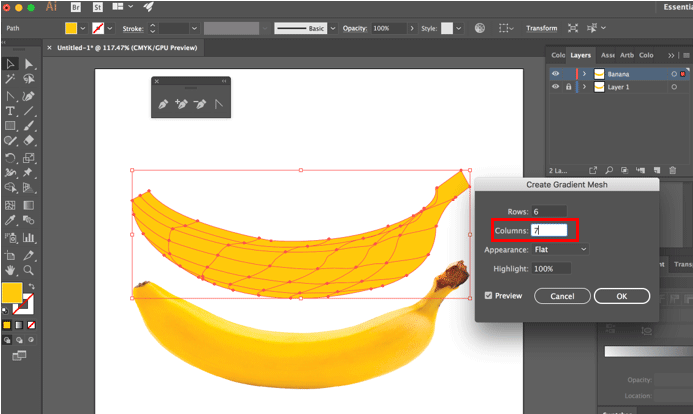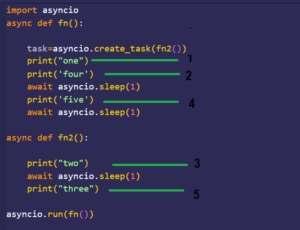Mastering Depth and Realism: A Comprehensive Guide to Using the Mesh Tool in Adobe Illustrator

Introduction:
In the expansive world of digital design, Adobe Illustrator stands as a beacon of creativity, offering a vast array of tools and features to empower artists, designers, and creators. Among its arsenal of capabilities, the Mesh Tool emerges as a powerful instrument, providing users with the ability to add depth, dimension, and realism to their artwork with precision and control. Whether you’re a seasoned illustrator, a graphic designer, or an aspiring artist, mastering the art of using the Mesh Tool in Adobe Illustrator opens up a world of possibilities for creating stunning illustrations, lifelike portraits, and captivating designs. In this comprehensive guide, we’ll embark on a journey to explore the techniques and tools needed to harness the power of the Mesh Tool, empowering you to elevate your artwork to new heights of realism and sophistication.
Chapter 1: Understanding the Mesh Tool
At its core, the Mesh Tool in Adobe Illustrator is a transformative feature that allows users to create complex gradients and blends with precision and control. Unlike traditional gradient tools, which rely on linear or radial gradients, the Mesh Tool enables users to define custom mesh points and color transitions within a defined mesh grid, allowing for precise control over the appearance and behavior of colors and gradients. Understanding the anatomy of the Mesh Tool, including mesh points, mesh lines, and mesh patches, lays the foundation for effectively using this powerful tool to create lifelike shading and highlights in your artwork.
Chapter 2: Navigating the Mesh Tool Options
Before delving into the creative process, it’s essential to familiarize yourself with the various options and settings available for the Mesh Tool in Adobe Illustrator. The Mesh Tool panel provides a range of options for customizing the appearance and behavior of mesh points and mesh lines, such as mesh density, color mode, and blending mode. Experiment with adjusting settings such as mesh size and mesh resolution to achieve the desired level of detail and smoothness in your gradients. Additionally, explore the Mesh Tool preferences in the Adobe Illustrator settings to customize default settings such as grid size and anchor point density.
Chapter 3: Creating Mesh Objects
With your document open in Adobe Illustrator, it’s time to start creating mesh objects using the Mesh Tool. Select the object you want to apply a mesh to using the selection tool (V), then activate the Mesh Tool from the toolbar or by pressing Ctrl/Cmd + M on your keyboard. Click on the object to create a mesh grid, then use the Mesh Tool to add and adjust mesh points and mesh lines as needed. Experiment with placing mesh points and mesh lines strategically to define the shape and form of your mesh object, allowing for precise control over the appearance and shading of colors and gradients.
Chapter 4: Applying Color to Mesh Objects
Once you’ve created a mesh object, it’s time to start applying color to it using the Mesh Tool. Select the mesh object you want to apply color to using the selection tool (V), then activate the Mesh Tool from the toolbar or by pressing Ctrl/Cmd + M on your keyboard. Click on a mesh point or mesh line to select it, then choose a color from the swatches panel or the color picker. Experiment with applying different colors to mesh points and mesh lines to create smooth transitions and gradients, allowing for realistic shading and highlights in your artwork.
Chapter 5: Refining Mesh Objects
Once you’ve applied color to a mesh object, take time to refine and adjust it to achieve the desired look and feel. Experiment with adding and removing mesh points and mesh lines to control the density and complexity of the mesh, allowing for precise control over the appearance and shading of colors and gradients. Use the direct selection tool (A) to select individual mesh points and mesh lines, then use the move tool (V) to move, resize, or rotate them as needed. Pay attention to details such as smoothness, continuity, and contrast, ensuring that your mesh objects are realistic and visually appealing.
Chapter 6: Incorporating Mesh Objects into Artwork
Once you’ve mastered the art of creating and refining mesh objects, it’s time to incorporate them into your artwork in Adobe Illustrator. Experiment with using mesh objects to create lifelike shading and highlights in illustrations, portraits, and designs. Practice combining mesh objects with other design elements such as shapes, text, and symbols to create visually compelling compositions. Consider using mesh objects as accents or embellishments to add depth and realism to your artwork, or use them as the primary focus to create bold and expressive designs that command attention.
Chapter 7: Fine-Tuning and Refining Mesh Effects
Once you’ve incorporated mesh objects into your artwork, take time to fine-tune and refine the effects to achieve the desired look and feel. Experiment with adjusting settings such as mesh density, color mode, and blending mode to control the appearance and behavior of mesh objects. Use the appearance panel and graphic styles in Adobe Illustrator to apply gradients, patterns, and textures to mesh objects, adding depth and visual interest to your artwork. Pay attention to details such as lighting, shadows, and reflections to ensure a cohesive and visually compelling result.
Chapter 8: Saving and Sharing Artwork with Mesh Objects
Once you’re satisfied with your artwork in Adobe Illustrator, it’s important to save and share your designs for sharing or distribution. Save your Illustrator document in a compatible file format, such as AI or PDF, to preserve the vector properties of your artwork. If you’re creating artwork for web or screen-based applications, consider exporting it as an SVG file for scalability and compatibility with web browsers. For print-based projects, export your artwork as a high-resolution raster image in formats such as JPEG or PNG.
Conclusion:
Mastering the Mesh Tool in Adobe Illustrator is a journey of exploration and experimentation, offering endless possibilities for infusing your designs with depth, dimension, and realism. By understanding the techniques and tools needed to navigate mesh options and settings, create mesh objects, apply color to mesh objects, refine mesh objects, incorporate mesh objects into artwork, fine-tune and refine mesh effects, and save and share artwork with mesh objects, you’ll be able to create stunning designs that captivate and inspire viewers. So grab your stylus, set your sights on the canvas, and let Adobe Illustrator become your trusted ally for bringing your creative visions to life with precision and flair.




